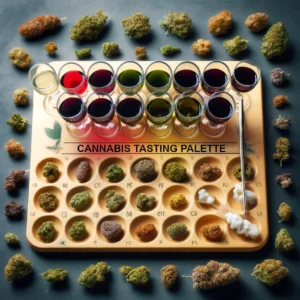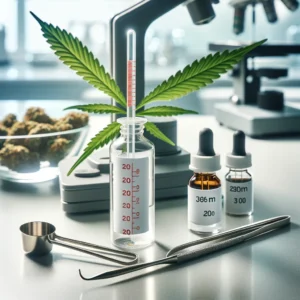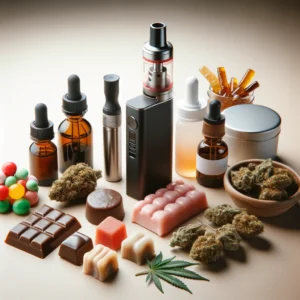The Ultimate Guide to Cannabis Edibles: What You Need to Know Before You Snack
In the kaleidoscopic world of cannabis consumption, edibles are the supple chameleons, transforming a plant into treats that tantalize taste buds and elevate the spirit. But edibles aren’t just another lighthearted means of enjoying cannabis—they’re a complex culinary art form with a set of physiological and legal nuances that every enthusiast, green-thumb or greenhorn, should digest.
Unwrapping the Munchies: What Are Edibles and Why Choose Them?
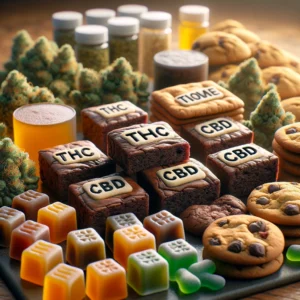 Edibles, simply put, are cannabis-infused food products. They can range from the quintessential pot brownies and space cakes to gummies, mints, beverages, and even savory dishes. With such a diverse array of edible forms, they’ve extended a delectably inclusive invite to anyone looking to incorporate these alternatives into their cannabis exploration. But what sets edibles apart from traditional methods of cannabis consumption like smoking and vaping? The answer lies in their unique effects on the body.
Edibles, simply put, are cannabis-infused food products. They can range from the quintessential pot brownies and space cakes to gummies, mints, beverages, and even savory dishes. With such a diverse array of edible forms, they’ve extended a delectably inclusive invite to anyone looking to incorporate these alternatives into their cannabis exploration. But what sets edibles apart from traditional methods of cannabis consumption like smoking and vaping? The answer lies in their unique effects on the body.
When cannabis is consumed orally, via the path of the Edible, it takes a longer scenic route to the bloodstream. This detour through the digestive system means a markedly different experience for the user. The buzz from an edible typically takes much longer to kick in—anywhere from thirty minutes to two hours—compared to the rapid ascent and subsequent plateau of a cannabis inhalation. Another distinguishing feature of edibles is their longer-lasting effects, which can linger for a sustained 4 to 8 hours or more, offering a gentle descent as opposed to the rapid drop experienced with inhalation methods.
The Science of Chew and High: How Edibles Work in the Body
Understanding how edibles interact with the body is a deliciously complex affair that begins the moment you take your first bite.
Digestion and Absorption
The Journey Begins in the Mouth
It’s a commonly established fact that digestion starts in the mouth. Saliva, with its enzymes and essential buffering components, begins this process by breaking down food into smaller chunks, preparing them for the next phase of processing in the stomach. This initial digestive encounter with cannabis in edible form begins the breakdown of the food, releasing the cannabinoids locked within.
Cannabis in the Stomach
The stomach is the next battleground for cannabinoids. Here, the acidic environment continues the breakdown of the food, while the unique pH levels help release cannabinoids such as tetrahydrocannabinol (THC) and cannabidiol (CBD) into the stomach’s acidic cocktail. Absorption of these cannabinoids begins in the stomach’s lining, setting the stage for their entry into the bloodstream.
Metabolization in the Liver
The True Alchemist’s Lair
The liver is the grand central of metabolic activity. Capable of transforming one substance into another, the liver takes THC down a metabolic superhighway, turning it into 11-hydroxy-THC, a metabolite of THC that’s more potent and easily crosses the blood-brain barrier, promising a cerebral ride with a twist—a more intense and possibly longer-lasting effect.
Crossing the Blood-Brain Barrier
From the Liver to the Brain
These transformed cannabinoids, now in their hybrid states, make their way to the brain via the bloodstream. Once they breach the coveted blood-brain barrier, they bind to cannabinoid receptors, which modulate a host of physiological processes, from pleasure and pain perception to motor coordination and mood.
Longer Duration, Deeper Experience
The Afterglow of an Edible Experience
The ride with edibles isn’t just about the thrill of the ascent—it’s about the sprawling descent that unfurls over a more extended period. Edibles are renowned for their pronounced and sometimes profound effects, qualities that make them alluring for those seeking a full-bodied and long-lasting interaction with cannabis.
The Dose Dilemma: Understanding Potency and Dosage
The unique trajectory of edibles through the body means that getting the dose right is crucial for a safe and enjoyable experience. The potency of edibles varies widely, influenced by factors like the type and strain of cannabis used, the extraction method, and the culinary practices employed.
The Measurement Conundrum
With Love, A Kitchen Misadventure
One of the challenges with edibles is ensuring a consistent and precise dose. Sinsemilla, or cannabis without seeds, has a stronger THC content than traditional bog weed. Thus, dosage can fluctuate widely if one decides to bake with a friend’s homegrown versus cannabis that has a known THC concentration.
Start Low, Go Slow
An Edible’s Safety Maxim
For the uninitiated and seasoned stoner alike, the adage “start low, go slow” is the safest approach to an edible rendezvous. It’s important to begin with a small dose and wait at least an hour before considering another morsel. The delay in onset can lead to the temptation to double down on doses, accelerating the risk of overconsumption.
Quality Control and Labeling
The Reflective Respite
One refuge comes in the form of regulated markets, where labels are required to list the THC content per serving. This transparency can foster an environment of informed and mindful consumption. However, for homemade or artisanal edibles, determining potency can be more like divining than calculating.
Navigating the Edible Landscape with Mindfulness and Mirth
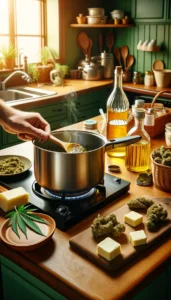 Edibles offer a novel approach to cannabis consumption, one that is as much about the culinary adventure as it is about the altered states that follow.
Edibles offer a novel approach to cannabis consumption, one that is as much about the culinary adventure as it is about the altered states that follow.
With this guide, you’re equipped to savor the experience with caution and appreciation, tapping into the wonders of edible ingestion with an informed and artful eye.
For those venturing into the edible unknown, remember the cardinal rules: understand potency, respect dosage, and be patient.
After all, the quintessential edibles’ message has always been to take your time and enjoy the ride, for with these cannabis-infused comestibles, the destination is just as enriching as the sojourn.

